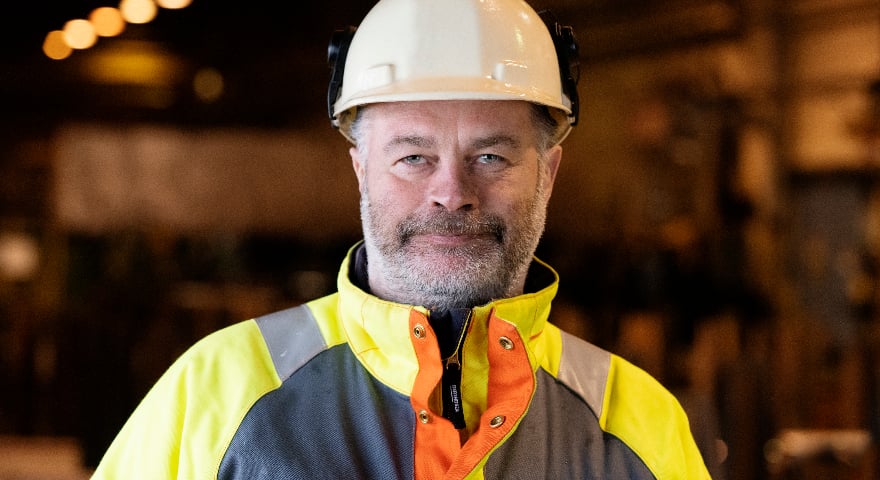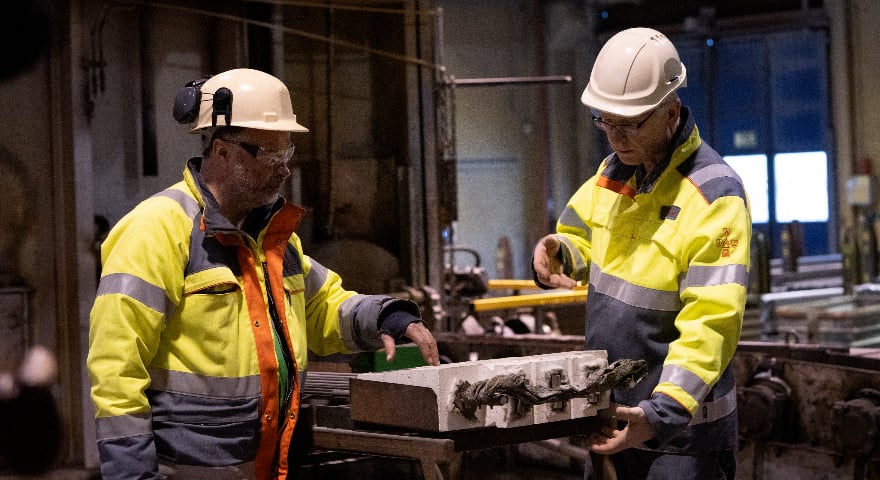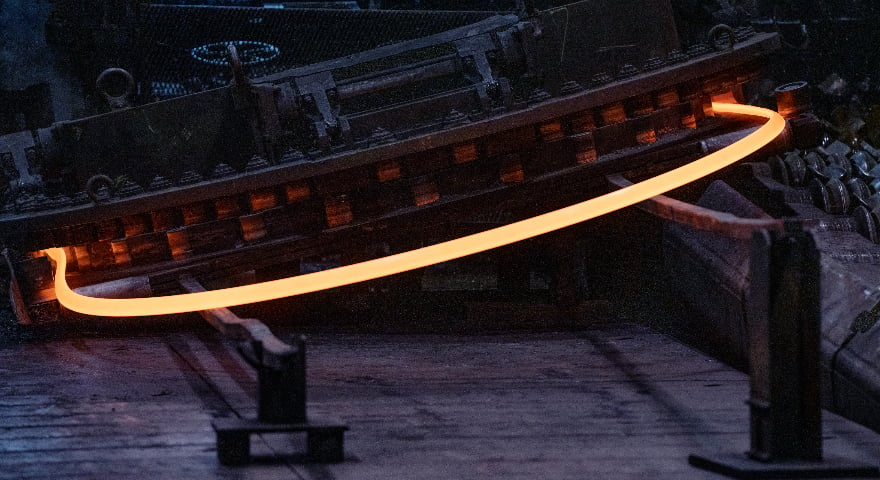Kanthal’s ingot rolling mill in Hallstahammar produces billets, which are then hot rolled in the rod rolling mill into wire rods in diameters between 5.5-12.5 mm. Prior to rod rolling, the billets are passing through a walking beam furnace, where they may be heated up to 1,300 degrees Celsius (2,370 degrees Fahrenheit).
 Stefan Hedlund, Process Development Engineer, Kanthal
Stefan Hedlund, Process Development Engineer, Kanthal
“The most important factor for the heating process is that we have good control of the furnace temperature to get an even temperature distribution through the billets.” explains Stefan Hedlund, Process Development Engineer, Kanthal. “If not, the billet might bend during rolling and then we have to scrap it.”
 Stefan Hedlund and Roger Berglund, Project Manager R&D, Kanthal
Stefan Hedlund and Roger Berglund, Project Manager R&D, Kanthal
Tried, tested – and electric
The walking beam process is a tried-and-tested technique for moving rectangular and square materials through a hot furnace. However what makes this furnace at Kanthal unique is that the heating is entirely electric. Traditionally either gas or oil is used to fuel the heating in such furnaces, both of which have lower thermal efficiency and generate large amounts of CO2.
“One main difference is of course the working environment: the electric furnace generate less noise and less dust,” says Roger Berglund, Senior Expert at R&D, Kanthal. “The lack of exhaust gases also means that we avoid the chimneys that are needed with gas furnaces, and by extension we then reduce our energy consumption. Overall, we don’t need the same amount of energy to generate the same heat. And with access to fossil free electric power the electric furnace is probably the most sustainable heating solution.”

Long-life elements
Kanthal® Super elements, based on molybdenum disilicide (MoSi2), are used for heating the furnace. When heated, a protective layer of silica is formed on the surface of the elements. This prolongs their service life and reduces the need for maintenance and repairs. But in case an element breaks during production it is possible to replace it without cooling down the furnace. It is one of the reasons why the furnace has been in operation for so long.
“Kanthal® Super elements can operate at temperatures over 1,800 degrees Celsius (2,370 degrees Fahrenheit) in air, and can transfer very high heating power,” explains Berglund. “In this furnace we are able to heat a steady flow of billets up to 1,300 degrees Celsius, which would be very difficult to do with any other electrical solution.”
